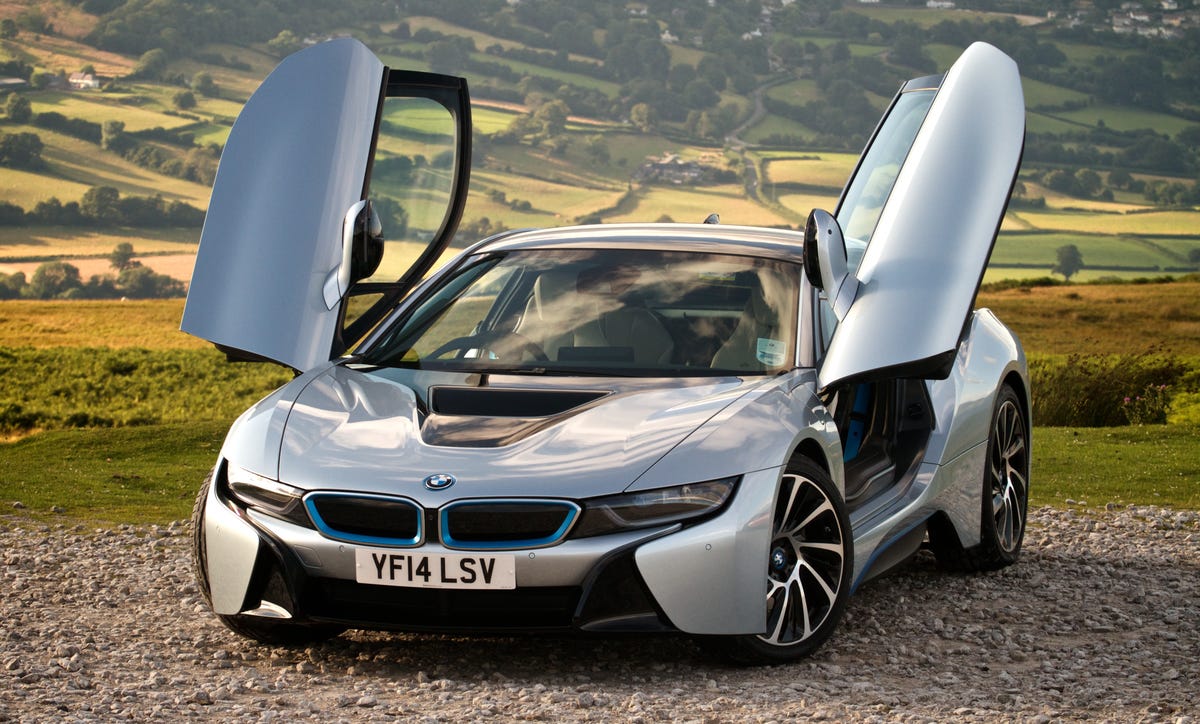BMW i8: Hot Hybrid (pictures)
BMW has caught the world's attention with their first hybrid supercar. XCAR takes a closer look at the i8 and runs down the key specs.

The i8 has three different power sources.
A 227-bhp 1.5-litre turbocharged petrol engine, a 129-bhp electric motor and a smaller electric unit used as a starter motor.
They all work differently depending on whether you're driving in Eco Pro, Comfort or Sport mode.
Eco Pro, unsurprisingly, keeps things as EV and eco as possible.
Comfort is the most "normal" mode -- the i8 acts as a hybrid. Albeit ,one that goes like the clappers if you put your foot down.
Sport mode is the i8's party piece -- all the motors work together and use the car's full 357 bhp and 420 lb. ft.
Because the i8 is comparatively light for supercar, all that power feels pretty good.
Zero to 62mph takes 4.4 seconds, and it'll hit a limited 155mph.
The i8 is faster to 62mph than some 991 Series Porsche 911s.
But it'll also manage 135mpg (UK). You don't get that in a 911.
Apparently, the i8's all-electric range is over 20 miles. The best we got was 15, but we weren't driving it "normally".
The i8 has something called LifeDrive, two components key to the car.
The Life portion is the carbon fibre tub -- it's the bit the passengers sit in.
Drive is an aluminum unit that holds the bits that can go bang.
Much like the i3, the i8's carbon fibre bits are on display.
As designs go, the i8 is pretty striking. While we were filming it, passers by constantly accosted us to ask whether it was a concept car.
It's remarkably similar to the Vision Concept Efficient Dynamics from 2009.
Though, sadly, the doors aren't see-through.
2012 saw BMW release an i8 convertible concept. How cool would that be?
The doors are a high point -- they do add some extra drama to the car. Not that much more was needed...
When the car was being designed, the scribblers wanted to add an extra 10mm to the car's nose.
But it wasn't that easy. The chief engineer wanted the designers to justify adding not only 10mm, but 200g to the car.
That's how serious BMW is about weight reduction.
The interior isn't as eco as the i3's, though in a near-£100,000 car that's probably a good thing. (Converted, that's about $170,000, or AU$180,000.)
It looks a little like the M1 supercar from the 70s.
The blue streaks round the blacked-out kidney grille are BMW i hallmarks.
BMW used two sheets of tempered glass sandwiching as an acoustic damping panel to keep engine noise out of the cabin. It's lighter than regular glass.
It does look good from behind...
The i8 is the first "sensible" hybrid supercar. It's the first of its kind and it's already pretty good.
It's the beginning of something big.

